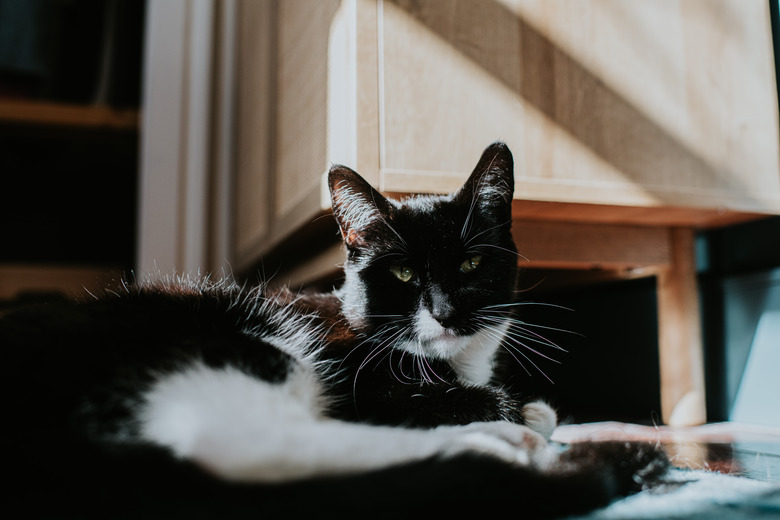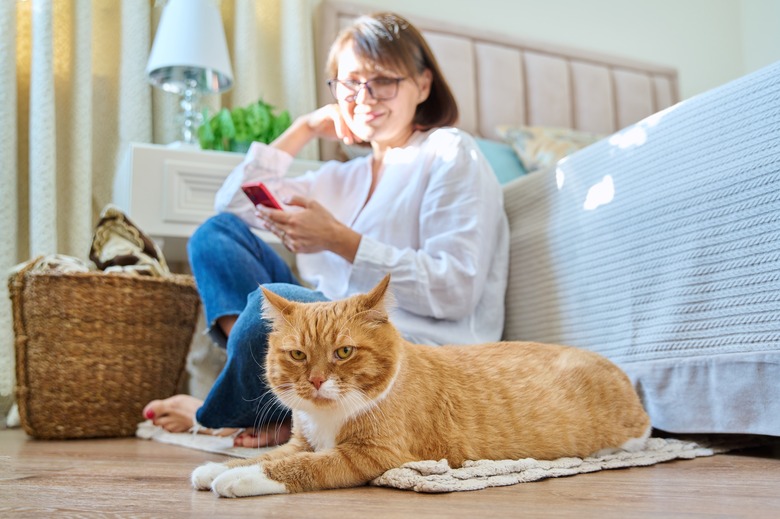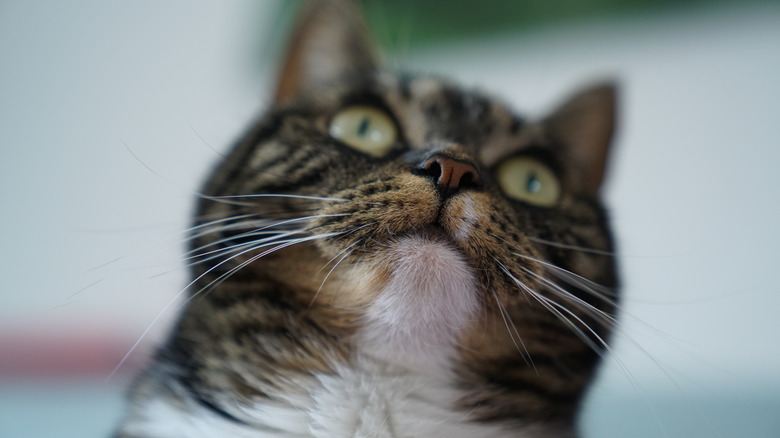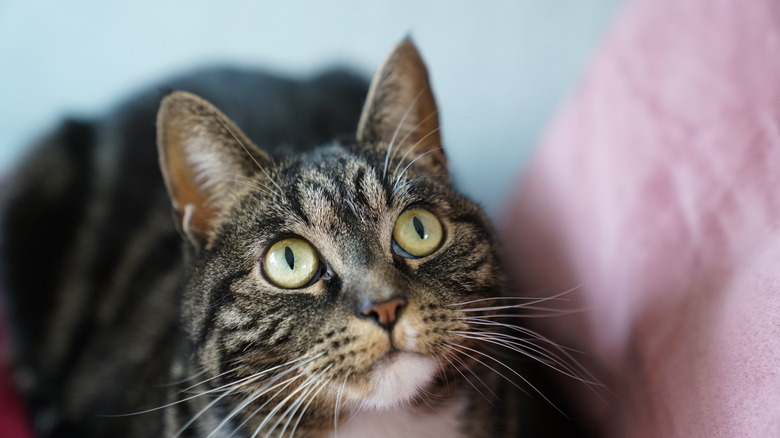How To Clean A Cat's Nose
Cat health can be affected by viruses and seasonal allergies, just as humans, with a stuffy nose due to congestion. Pet owners can clean the exterior of a cat's nose as well as open the sinus breathing passages to provide some comfort and relief. If your cat displays other signs of sickness, fever or coughing and sneezing, a trip to the veterinary clinic is in order for a diagnosis and treatment.
Causes of stuffy noses in cats
Causes of stuffy noses in cats
When cats get a stuffy nose, it's usually caused by indoor or outdoor environmental allergens or viruses such as herpes and calici. Stuffy noses in cats can also be caused by bacterial infections, nasal foreign bodies such as a piece of grass, fungal infection, polyps, or other nasal tumors.
Symptoms of stuffy noses in cats
Symptoms of stuffy noses in cats
Symptoms that your cat may have allergies include:
- Stuffy or runny nose
- Open-mouth breathing due to a stuffy nose
- Coughing
- Sneezing
- Snoring
- Itchy ears, eyes, and nose
- Pawing at the nose
If a virus, such as an upper respiratory infection (URI), is causing the stuffy nose, your cat will have similar symptoms and may also have nasal discharge, such as mucous secretions. However, URIs do not typically cause itchiness the way allergies usually do.
Outdoor allergens that affect cats
Cats don't have to go outside to be affected by outdoor allergens. Pollen from outside can easily come inside through open windows and doors or on people's clothing. Your cat could be allergic to:
- Flowering plants
- Trees
- Weeds
- Grasses
- Leaf mold in autumn
Indoor allergens that affect cats
Cats can also be allergic to a variety of potential allergens that are indoors, either instead of outdoor allergens or in addition to them, including:
- Dust mites
- Mold, including black mold
- Mildew
Upper respiratory infections in cats
One of the most common causes of upper respiratory infections in cats is feline herpesvirus. URIs can lead to pneumonia and make your cat very ill, so it is important to recognize the symptoms of URIs:
- Stuffy or runny nose with discharge
- Open-mouth breathing
- Coughing
- Sneezing
- Watery eyes and eye discharge
- Fever
- Elevated heart rate due to fever
- Decrease in appetite
If a bacterial infection is suspected, treatment will include antibiotics. For feline herpesvirus, your veterinarian may suggest:
- Lysine
- A humidifier
- Nebulization from a steamy bathroom
- Antiviral medication
Another virus that causes URIs in cats is calicivirus, which medication currently cannot cure. The symptoms of calicivirus are very similar to those of herpesvirus but may also include:
- Painful ulcers in the cat's mouth and/or lips and nose
- Difficulty eating due to the ulcers
- Drooling
- Lameness in some joints (more common in kittens)
- Severe depression
- Edema of the face and/or legs
- High fever
- Jaundice
What to do if your cat has a stuffy nose
What to do if your cat has a stuffy nose
Cats with a stuffy nose often breathe through their mouth, so they find it difficult to breathe and eat at the same time. Here are some ways to help by opening the sinus and nasal passages and encouraging eating:
- Run a hot shower to create steam.
- Place food and water dishes in the closed bathroom.
- Don't turn on the ceiling vent or open windows.
- Try warming food first because it may make the smell of the food stronger so the cat can smell it and regain an appetite
How to clean a cat's nose
How to clean a cat's nose
Cleaning your cat's stuffy nose and crusty buildup can also clear the nasal passages as well as increase the cat's comfort. Of course, cats don't understand this, so don't expect cooperation from them during nose cleaning. Speak softly and reassuringly to your cat throughout the process. To clean both the inside and outside of the nose:
- Hold the cat firmly but gently so you have access to the feline's nose and face.
- Dip a clean cotton ball or cotton swab in warm water and gently dab the outside of the nose to loosen any visible dried, crusty discharge.
- Replace the soiled cotton ball and wipe with gentle strokes all around the nose until all crusts are gone.
- Unscented baby wipes also work well for this.
- Saline nose drops can be used to help inside the nose but ask your veterinarian before using them.
- Reward your cat with treats.
How to prevent stuffy noses in cats
How to prevent stuffy noses in cats
The best way to prevent cats from getting a stuffy nose is to keep them healthy. If only it were that simple! But, you can take several actions toward that goal. For example:
- Keep up to date on vaccinations. The herpesvirus vaccine and calicivirus vaccine reduce clinical signs and duration of symptoms if a cat is infected. But the calicivirus vaccine can't provide full protection because there are multiple strains of the virus.
- Get the correct diagnosis. If allergies are the cause, your veterinarian may prescribe antihistamines to prevent allergy attacks.
- Stay away from sick cats. Viruses can be quite contagious.
- Pay attention to symptoms. Early diagnosis can keep conditions from worsening.
- Follow through with medications and treatments whether your veterinarian prescribed medication or suggested home care.
When to see your veterinarian
When to see your veterinarian
If your cat has been diagnosed with allergies, your veterinarian will work to determine what the allergen is and may prescribe a corticosteroid followed by a regimen of antihistamines.
Get to know what is normal for your cat by regularly running your fingers through the fur and looking closely at the cat's eyes, nose, and mouth. If your cat displays unusual bumps, sores, or scabs or has other signs of sickness besides a stuffy nose for more than a day or so and doesn't have a known allergy, see your veterinarian. Antibiotics may be prescribed for an infection, and fluids can be used if dehydration is an issue. A cat with a fever tends to be lethargic and may lack an appetite for food and water, especially if breathing through the nose is a problem.
Cats become weak, dehydrated, and very ill in just a few days. If symptoms persist, if you notice your cat's breathing is labored, or if your feline is acting unusual in other ways, it is safer to contact your veterinarian for advice and an appointment to be evaluated than it is to wait and see if the condition worsens. Catching illness in its early stages is always better.
The bottom line
The bottom line
Cats can have a stuffy nose for many reasons, from allergies to viruses to infections. Some causes can be serious, so it is important to watch for additional symptoms, such as itchy eyes, sneezing, lethargy, loss of appetite, and generally acting unusual. If symptoms last more than a day or so, seek veterinary care because cats can become very ill very quickly. A veterinarian will diagnose the problem and provide treatment to restore your cat's health and comfort.



